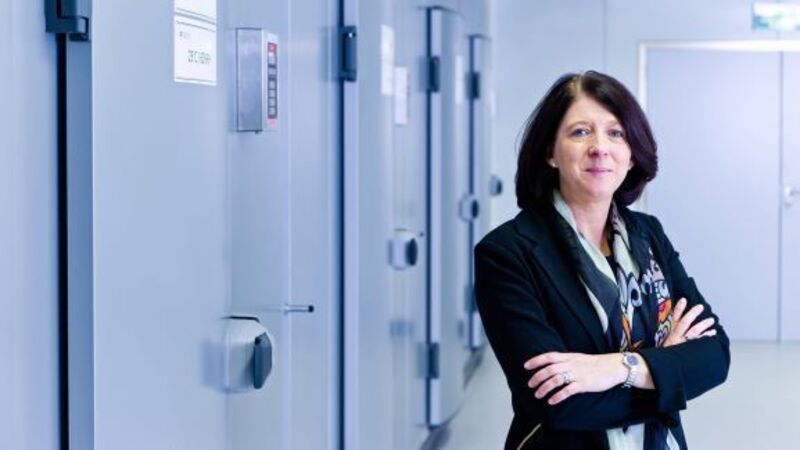Putting pharma storage to good use

Founder and chief executive Louise Grubb, who previously founded and subsequently sold, animal food supplement company Nutri Science, has identified a demand for the facility, which she says is the first dedicated stability storage site in the country
Stability storage, she explains, is a regulatory requirement for pharmaceutical and lifescience firms carrying out R&D and is also required for quality control.
“It is the placing of samples for testing in storage at controlled temperatures for specified periods of time and is used to establish shelf life.’’
Ms Grubb says that until now, companies in Ireland have either built their own stability storage chambers or sent them to the UK or even the US. Given the high number of multinational pharmaceutical companies operating in Ireland, she sees significant opportunities to build up the business.
Q1 Scientific officially launched its services at the Life Sciences Summit in Dublin at the start of this month. Prior to this, Ms Grubb spent over 18 months researching the market and drawing up a business plan.
Looking for a business opportunity in the pharmaceutical sector following the sale of Nutri Science, she observed that the number of new products being released had declined.
She did some research as to the needs of the industry. “Stability storage is expensive to build, involves ongoing costs, and is large and takes up valuable production space. I decided to look in to the option of building a facility and offering companies the opportunity to outsource.”
Speaking to a number of pharmaceutical companies in the South-East, Ms Grubb found that many companies said they would be willing to outsource stability storage needs. “Smaller R&D companies here don’t have their own stability storage chambers and find it very hard to access stability storage,’’ she said.
Ms Grubb found two companies which were willing to commit to becoming customers once the facility was built.
A year ago Ms Grubb put a business plan together and six months later secured funding. The first phase involved raising €500,000, leasing a 5,000sq ft facility at Westside Business Park, and building six stability storage chambers.
Registered in late 2012, Q1 Scientific has since taken on four science graduates with a background in quality control in the pharmaceutical industry. Ms Grubb used her own funds, raised some from an Employment Investment Incentive Scheme, and got some grant aid and a loan from Waterford City Enterprise Board.
The aim now is to target companies in the pharmaceutical, medical device, and bioscience industries.
“We already have one customer in the South-East and have another two lined up. Our aim is to have 10 customers by the end of the year — 10 small-to medium-sized companies is what we need to proceed to phase two, to build more storage chambers and expand. If we sign a large multinational, life will be more comfortable and we can expand faster,’’ she says.
Ms Grubb believes the service offers a cost-effective solution to companies struggling to cut costs and to deal with increased regulatory demands. “Our service is being offered on a pay per use basis; we offer companies the opportunity to control costs and to save on space. This is a model which will work well in the recession.”
Ms Grubb says the availability of a stability storage facility is something which could attract new pharmaceutical companies to locate in Ireland in the future.
The challenge for Q1 Scientific now is to gain traction. “We need to let companies know that we are here. Getting initial customers is difficult because we need to build up trust. We are working on building our reputation and are talking to multinationals, Irish R&D companies, and contract laboratories,’’
Estimating there are at least 200 pharmaceutical and lifescience companies in Ireland which could potentially use Q1 Scientific’s services, Ms Grubb is confident the company can achieve significant growth this year. The aim is to enter phase two at the end of the year and to recruit another five staff at the start of 2014. Long term, the aim is to become a world-leader in global stability storage solutions.

















